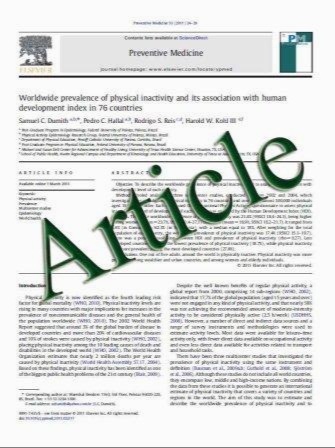Insulin resistance, low-grade inflammation and type 1 diabetes mellitus
- نوع فایل : کتاب
- زبان : انگلیسی
- مؤلف : G. Llaurado´ , L. Gallart , R. Tirado , A. Megia , I. Simo´n ,A. Caixa`s, O. Gime´nez-Palop , E. Berlanga , J. Vendrell , J. M. Gonza´lez-Clemente
- چاپ و سال / کشور: 2011
Description
To assess the relationships between insulin resistance and low-grade inflammation in subjects with type 1 diabetes mellitus (T1DM) who do not have clinical macrovascular complications. A total of 120 subjects diagnosed with T1DM 14 years before were evaluated for the following: (1) sex, age, body mass index, waist-to-hip ratio (WHR), blood pressure, smoking, alcohol intake, insulin dose, HbA1c and lipid profile; (2) microvascular complications; (3) plasma concentrations of soluble fractions of tumour necrosis factor-a receptors type 1 and 2, interleukin-6, adiponectin, leptin and high-sensitivity C-reactive protein (hs-CRP); and (4) insulin resistance (estimation of the glucose disposal rate—eGDR). Those subjects with an eGDR below the median of the same sex group were classified as insulin resistant and the others as insulin sensitive. Insulin-resistant men, compared to the insulin-sensitive, had higher WHR (0.89 ± 0.08 vs. 0.83 ± 0.05; P\0.01), higher systolic [121 (118–125) vs. 114 (108–120) mmHg; P = 0.01] and diastolic [73 (66–80) vs. 67 (70–73) mmHg; P = 0.02] blood pressures, higher HbA1c values [8.7 (8.1–9.9) vs. 7.5 (7.2–8.0) %; P\0.01] and higher hs-CRP concentrations [1.16 (0.61–3.20) vs. 0.49 (0.31–0.82) mg/dl; P = 0.01], but no other significant differences between groups were found. Insulin-resistant women had higher WHR and HbA1c values, compared to the insulin-sensitive, but they did not have any other differences. In men, hs-CRP correlated significantly with WHR and HbA1c (r = 0.363; P = 0.016 and r = 0.317; P = 0.036, respectively), after adjusting for age, alcohol intake, smoking and microvascular complications. Insulinresistant men with T1DM have an increase in plasma concentrations of hs-CRP. Central obesity and HbA1c are its main determinant
Acta Diabetol DOI 10.1007/s00592-011-0257-1 Received: 21 November 2010 / Accepted: 14 January 2011 Springer-Verlag 2011


